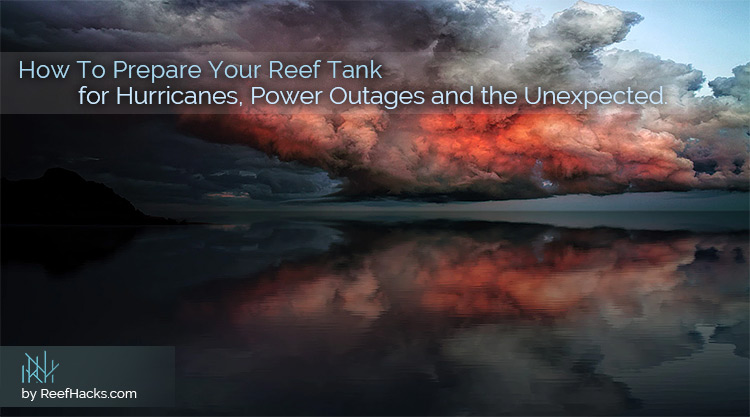Mother Nature is as brilliant as she is vicious. As survivors of natural disasters already know, nature isn’t always kind and protective. In moments of catastrophic rage, the elements required for life transform into deadly weapons. Thankfully, most of us rarely experience the harshness of the natural world.
But, we aren’t always lucky.
Throughout the United States, the raw power of our world makes its presence known. From the midwestern threats of tornados to the thunderous storms that rip along coastal regions, most Americans are familiar with the fear, worry and frenzy storms trigger within us.

Author:
As a lifelong aquarist, Yuliya has an endless curiosity about our underwater universe. After graduating with a bachelor’s in Environmental Engineering, she transformed her passion into a successful career. While working at the Institute of Environmental Protection in Moscow, her passion for saltwater and reef aquariums only increased. Moving to the United States in 2013, Yuliya embarked on another impactful journey by sharing her unprecedented experience for all aquarium hobbyists ... Read More.
For much of my life, thunderstorm preparation wasn’t much of a concern. Russia doesn’t get very many serious storms, especially those capable of spawning killer tornadoes. After moving to America, I finally understood what all the hubbub was about.
While an emergency prep kit is never a bad idea, it wasn’t at the top of my list as I have already two of them. More specifically, preparing beyond the standard extra cans of food and bottled water. However, everything changed after I experienced the power of North Carolina thunderstorms.
This day began as many before it had.
I awoke to the morning newscasters mentioning a severe thunderstorm hundreds of miles away. At this point, I’ve experienced standard storms. So I went on about my day giving little thought to the looming threat.
If only I knew just how seriously monumental this day would become.
Fast-forward 12 hours later. The storm damaged several power stations, and like you probably guessed, my power had been out for most of this time. Sitting in my bedroom, I was frantically thinking of ways to save my newly established saltwater aquarium. Alas, nothing could be done. The unexpected power outage lasted nearly a full day. And while my frozen goods survived, my more delicate saltwater inhabitants suffered greatly.
Does this sound familiar? This is when I realized preparedness means something completely different for the reefer.
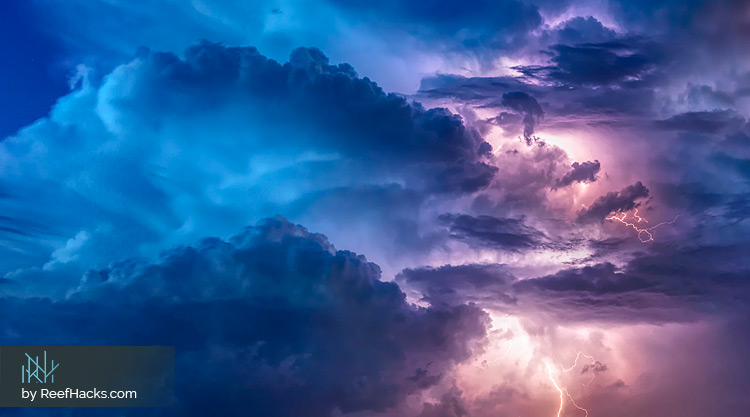
Can Your Reef Tank Survive the Storms of Life?
This is one of the most important questions all aquarists must answer. When your only worry, at least when it comes to power outages, is whether your power surge protector can save your laptop from frying, it’s easy to forget just how reliant your aquarium is on electricity.
In many ways, electricity is the sun for your mini-tropical paradise. Just as life on earth would perish without our celestial orb of light and energy, aquarium life stands little chance of survival when the power goes out.
Preparing your reef tank for power outages must be part of your setup plan. If you’re not concerning yourself with this inevitability, then you’re literally consenting to wasting hours, months and years of work. I’m just guessing here, but I doubt that’s something you really want to do.
Obviously, a sudden loss of power is bad for tank stability. After all, this artificial microcosm is only possible thanks to the electrical equipment modern reef aquariums require.
But, do you know exactly why?
What happens when a standard reef tank encounters a power outage?
- Water Movement (Circulation) - Without active water circulation, your tank is nothing more than stagnant pond water. Flow pumps serve more purpose than adding “waves” to your underwater aquascape. These pumps inject oxygen into your tank, which as you can guess, is vital for aquarium inhabitants. As soon as these pumps cease working, oxygen supplies dwindle and the lives of its residents are in serious jeopardy. Out of all the damage caused by power outages, this is the most common, and most deadly.
Be sure to check our article for more information about the flow in a reef tank: Go With the Flow – Your Essential Guide How To Choose The Right Aquarium Pump For Your Reef Tank.
- Nutrient Export/Filtration - Although not as immediately serious as losing water circulation, it’s not long after your filtration system goes offline that your tank health begins to dwindle. If you think you’ve had problems in the past with toxic nutrients and nuisance algae, just wait until your filtration system is dead for longer than a day. Harmful nutrients collect faster than you realize. Even if power is restored within a reasonable timeframe, regaining control of your water parameters can be extremely challenging.
For more info read the full article: Nutrient Export Method Hack – How To Choose Your Ideal Method.
- Temperature - If you live in a hot environment, or a power outage occurs during summertime, this may not be your biggest concern. However, winter ice storms or aquariums kept in a cool part of a building will find the absence of a reef tank heater is deadly. Fish, coral and other invertebrates are extremely sensitive to temperature variations. While saltwater holds its heat better than freshwater or the air in your home, it won’t take long before livestock suffers from the cooling waters.
- Lighting Systems - Imagine waking up to realize the sun was gone? Obviously, you wouldn’t be awake for long. The same is true for your aquarium. Okay, it’s not as serious as losing our life-giving star. In fact, this is one of the lesser threats to your reef tank. Because your aquarium likely uses a standard “day /night” cycle, inhabitants will simply treat this extended darkness as if it’s just an elongated night. Of course, there comes a point when the absence of light becomes detrimental. This, however, will be the least of your worries as the absence of the aforementioned systems will have already deteriorated aquarium balance.
If you are curious to learn more about reef tank lighting, please check our article: Illuminating Reef Tank – Reef Tank Lighting Guide for Beginners.
- Automated Dosing/Monitoring Systems - This final threat only applies to reefers who use automated dosing and monitoring systems, like the GHL Doser 2.1. While this may not be the most detrimental loss, if you’re running a sensitive tank or are in the middle of battling stubborn parameter levels, the longer these systems remain offline, the more destructive the outcome.
So, how does a reefer protect their beloved aquarium during an unexpected power outage? Yes, you guessed it: preparation.
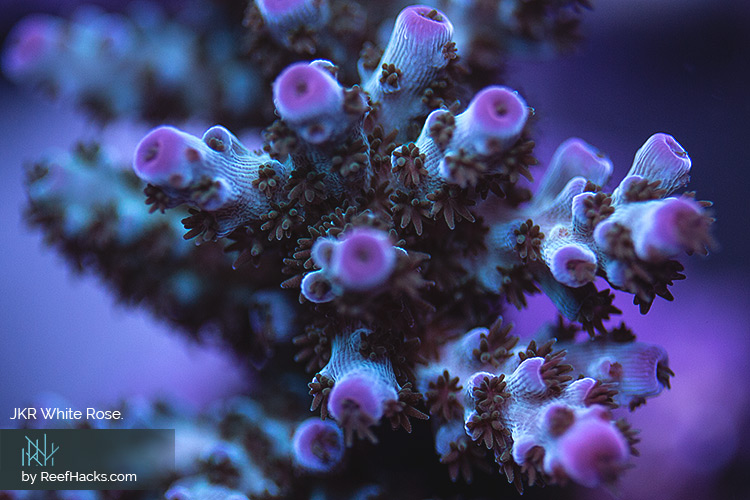
Hacks for Saving Your Reef Tank From Power Outages.
Preparing your aquarium for storms, or other unexpected hiccups in electricity, is an absolute must for any reefer. But, like preparing your own home, knowing where to begin feels like a daunting task. This is where hacks come into play.
On the surface, reef tank preparation isn’t that much different from preparing your home. However, the steps involved are slightly different. While your specific needs may differ from others, there’s several universally applicable hacks.
Just recently, Hurricane Florence threatened to demolish my current home state, North Carolina. While I’ve spoken about the specific steps needed to secure aquariums, I realized my own tanks were vulnerable to power outages. Thankfully, the hurricane caused little damage to my area and I was without power for less than four hours.
I was lucky.
But that’s not a guarantee for the future, which is why I’ve completely revamped my emergency plan. The first step, buying a solid generator. In this case, I went with a Champion Inverter Generator. You can check my full review of this lifesaving piece of equipment here: Be the Champion of Power Outages – Champion Dual Fuel Generator Review.
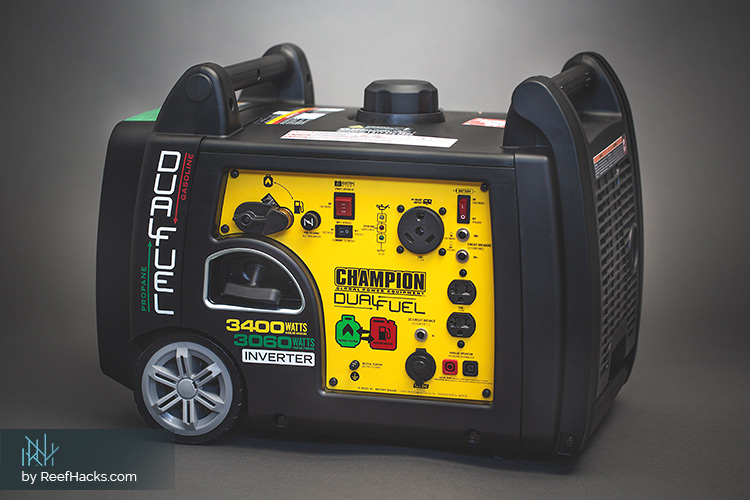
Instead of talking about the obvious preparedness tips, such as having battery-powered air pumps, generators and a variety of backup systems/surge protectors, here’s several hacks that you may not know. If you find yourself without power, these hacks can help safeguard the health and livelihood of your most precious underwater family members.
Keep the Light Out - This may feel strange, especially since you’ve spent countless hours studying about the importance of light for saltwater aquariums, but in a power outage, keep the room and tank as dark as possible. If you’re in a room with windows, drape a thick sheet over the tank. This not only maintains a darkened space, but it can help trap as much heat as possible. The purpose of this hack is to keep fish and other inhabitants in a sedated state, which means they use less energy and require less oxygen.
Delay Oxygen Deprivation - As I mentioned earlier, when water pumps go offline, water becomes less oxygenated. This spells certain death for your livestock. While a battery backup pump and/or generator is an obvious lifesaver, if those aren’t available or aren’t working, there’s a couple of hacks that may help keep your tank from becoming a watery coffin.
Only perform these hacks if livestock are showing signs of deprivation, such as open-mouthed fish hovering near the surface. Regardless of your actions, try your hardest not to startle the fish. Scared fish require more oxygen. Be as quiet and gentle as possible.
Oxygenation Hacks.
- Oxygenation Hack #1 - Use a clean water pitcher or bucket to scoop up aquarium water. Pour the water back into the tank so it’s around 2-feet above the surface. This agitates the water and temporarily replenishes oxygen. Do this for five minutes and repeat every 30 mins.
- (Dangerous) Oxygenation Hack #2 - This hack should only be used in times of a true emergency. Hydrogen peroxide can increase oxygen levels, but it can also be extremely toxic to inhabitants. If necessary, the standard dosage is 1 teaspoon of pharmacy grade hydrogen peroxide for every 10 gallons of display tank water (don’t count sump water volume). However, I recommend using half this amount and monitoring your results. Again, this should only be used during the most dire of situations and with the understanding that you could be doing more harm than good. Do your own research first on this subject!
- Oxygenation Hack #3 - Order battery-powered air pumps. In my opinion, this is an absolute must for all reefers I have five of them. While the scoop-pour method can work, air pumps do the job so much better (and easier). Typically, an air pump that takes two D batteries lasts anywhere from 24 to 48 hours, which can be a literal lifesaver during power outages. Make sure to buy a few packs of D batteries for safekeeping. These are typically the hardest to find when an entire community is preparing for an upcoming storm. I'm using Marina Battery-Operated Air Pump for the last few years without any issues and you can't beat that price.
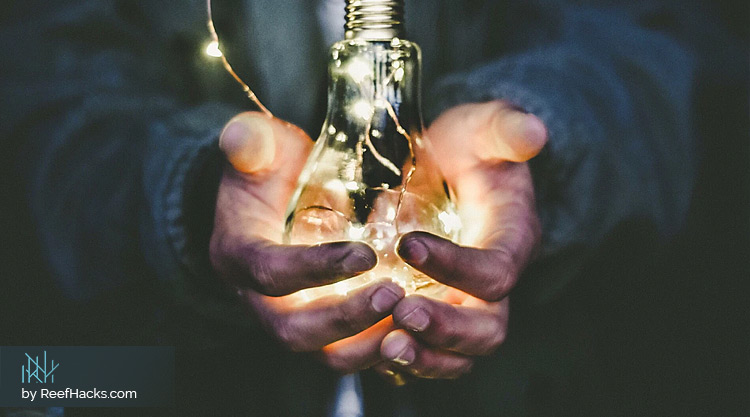
Preparing for Power Restoration.
You may be praying for the power to turn back on, but wait just a moment. If your power been out for an extended period of time, you need to do some quick maintenance to prevent further damage to your aquarium. The most important tasks include:
- Empty your skimmer collection cup. The last thing you need is all the gunk and toxic spew that’s been marinating in the collection cup to overflow back into your tank. But, that’s exactly what will happen if you don’t empty the cup as soon as you lose power. If the cup overflows, its contents can cause a serious spike in nutrients.
- Have a generous RO/DI water supply plan. Make sure you’ve collected and properly stored ample RO/DI water based on aquarium total water volume. I always mix several buckets of salt water. This ensures I can perform water changes, if needed, or have livestock-ready containers should everything go south.
- Stop feeding corals and fishes. As soon as the power goes off, your nutrient export system stops working. Because you don’t know when electricity will be restored, stop any activity that adds nutrients, like feeding. Don’t worry, fish can survive several days without food.
- Freeze several water bottles. If you need to cool tank water, plopping a frozen water bottle into the tank is one of the best hacks.
- Get ready to test water parameters. As soon as power is restored, test tank water, looking specifically for imbalanced nitrite and ammonia levels. Be prepared to execute emergency nutrient rebalancing protocol, like large water change.
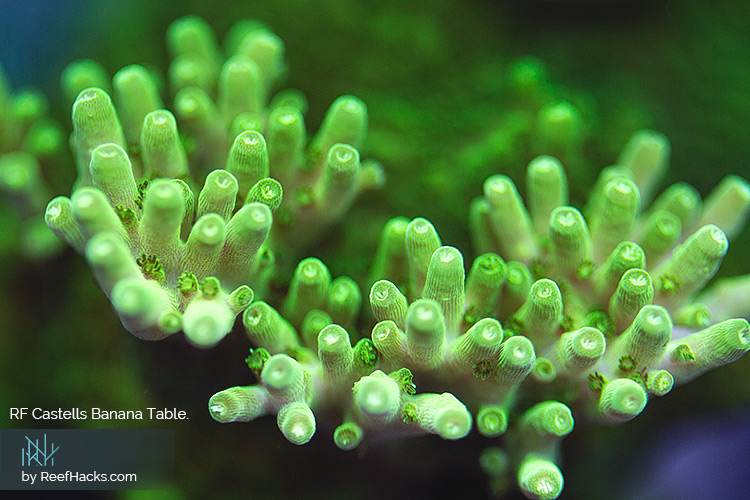
Reef Tank Storm Preparation - Hope for the Best, Plan for the Worst.
There you have it. While there’s many other tips and suggestions, these are the most beneficial for any saltwater aquarium. Although the best method of preparation is making sure your entire system is backed up by batteries or a generator, even those safety nets can fail.
Before signing off, here’s the most invaluable piece of advice I’ve ever been given, at least for power outages:
- Don’t overreact.
- Don’t assume it won’t happen to you.
When recovering from a power outage, your tank needs time to recover and stabilize. Don’t be like the thousands of reefers who accidentally caused more harm than good when recovering from this situation. Tread lightly with your treatments and give your aquarium time to stabilize. Remember, don’t react. Instead, adapt based on what you know and what your aquarium is telling you.
Lastly, don’t delay. Assuming this destructive scenario can’t happen to you is unrealistic, and honestly, irresponsible. Protect the microcosm you’ve tirelessly created and prepare an emergency plan today.
As always, on behalf of the entire Reef Hacks team,
Happy Reefing!
by Yuliya Ivanova for ReefHacks.

